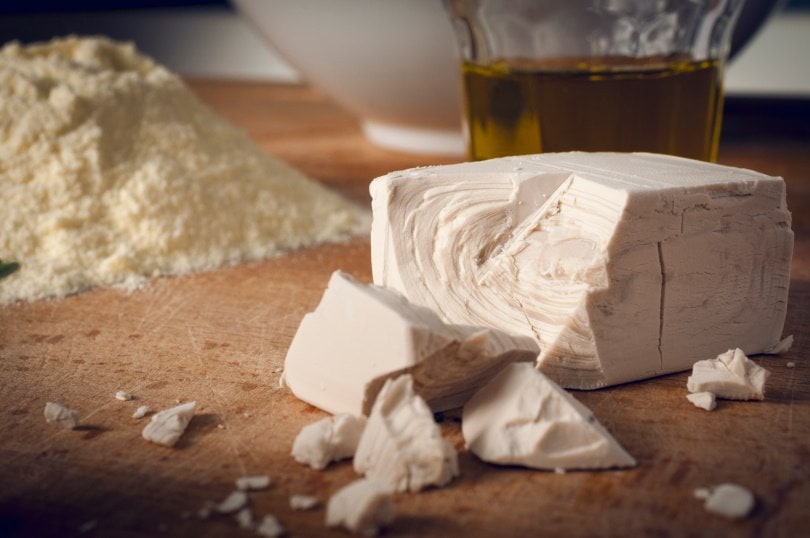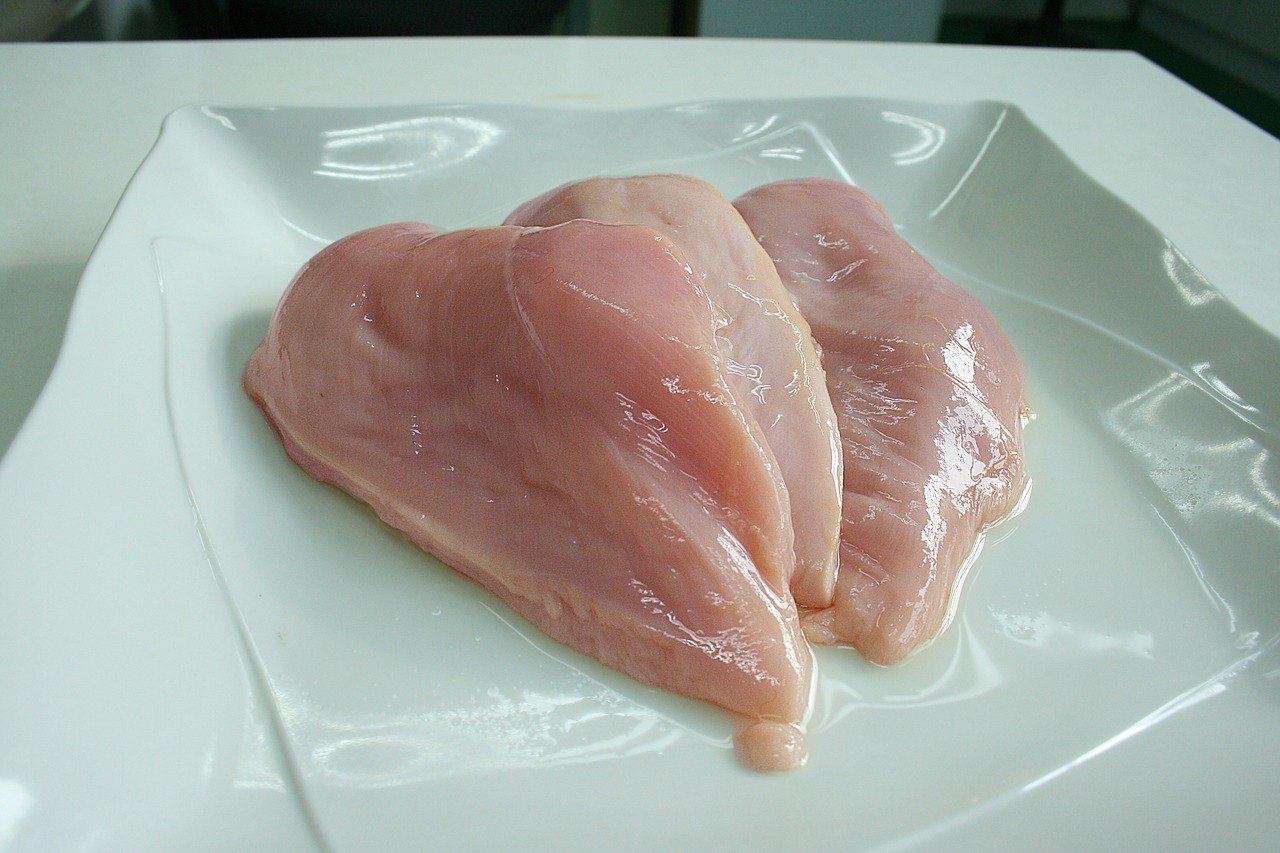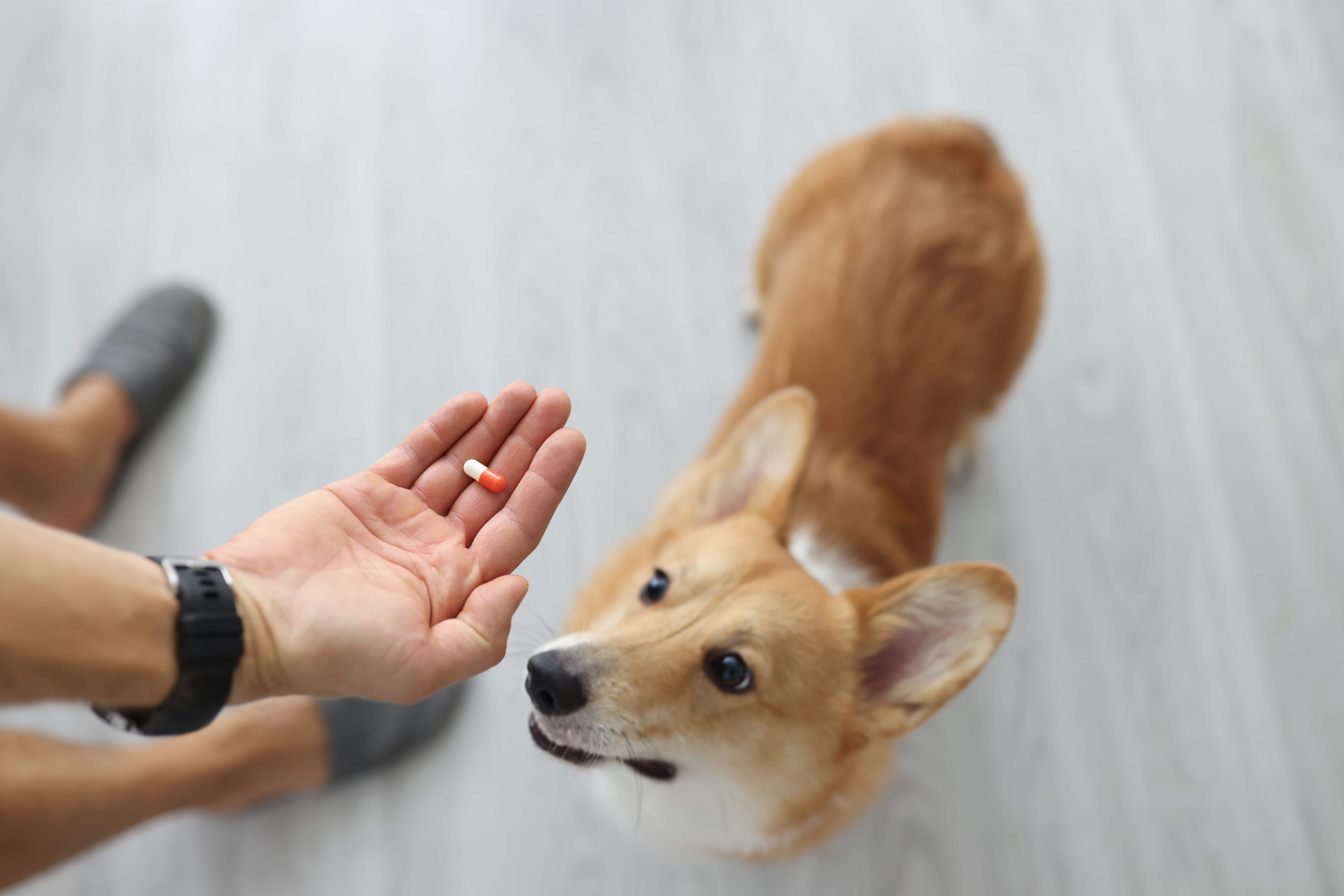Thiamine, also known as vitamin B1, is an essential nutrient for dogs and humans. Dogs require it for carbohydrate metabolism, optimal growth, and efficient nerve function. Because dogs’ bodies don’t store the nutrient, they need to obtain it through what they eat. Pet foods that adhere to American Association of Feed Control Officials (AAFCO) guidelines contain thiamine. Read on for six food sources of thiamine for dogs.
Top 6 Food Sources High In Thiamine For Dogs
1. Brewer’s Yeast

Brewer’s yeast is full of B vitamins, magnesium, iron, and zinc—all of which are essential for canine health. It’s great for canine skin and fur and may encourage optimum liver health and reduce anxiety in some pets. It may also provide a bit of natural protection against fleas and ticks.
There are a few ways to introduce brewer’s yeast to your buddy’s diet, including powders and pills. Canine-friendly powdered products can be mixed directly into your pet’s wet food. But there are also tasty chewable treats for dogs who don’t like the taste of powders. Brewer’s yeast is high in calories, so limit your pet’s consumption to stay safe. The product isn’t right for all dogs, including those with weakened immune systems and yeast sensitivities. It is also important to note that brewer’s yeast should not be used as a primary source of vitamin B for your dog, as it lacks vitamin B12 (a B-vitamin your pup needs). It is always advised to consult with your veterinarian before deciding to add brewer’s yeast to your dog’s diet.
2. Organ Meat

Liver and kidney meat have lots of thiamine and other healthy nutrients such as iron, copper, and vitamin A. Most organ meat has tons of vitamin A, which isn’t great for dogs when consumed in large amounts. Organ meat should only make up about 5% of your dog’s diet to prevent excessive vitamin A intake. Commercial liver treats provide a simple and tasty way to increase the thiamine in your dog’s diet.
3. Muscle Meat

Chicken, turkey, elk, deer, beef, and pork are great sources of thiamine for dogs. Although muscle meat tends to have less vitamin B1 than organ meat, it still packs quite a nutritional punch. Almost all animal-based meat contains all the B-vitamins your pup needs (including thiamine). Dogs are functional carnivores; these meats are the best way to ensure your dogs obtain their B-vitamins, protein, and nutrition.
Turkey and chicken are lower in fat and calories than beef and pork, making them good options for pets who need to drop a few pounds. Meat-based treats provide easy ways to increase dogs’ thiamine intake.
4. Fish

Salmon, mackerel, halibut, and sardines provide tasty ways to increase your pet’s thiamine intake naturally. All are low in calories, full of healthy fats, and packed with antioxidants and important amino acids. They also contain B vitamins and omega-3 fatty acids to support optimal skin, coat, and joint health.
It’s fine to treat your dog to a few bits of properly prepared fish every now and then. To create a tasty, healthy treat for your dog, cook fish in the oven until well done. Remove any bones and chop the fish into small pieces before giving it to your dog to prevent choking. There’s no need to add seasonings or other flavor enhancers while cooking the fish or before serving it to your dog.
For dogs on a raw meat based diet, raw fish isn’t advised. Many species of raw fish contain an enzyme known as thiaminase. This enzyme breaks down thiamine in your pup’s body and will cause thiamine deficiency. Though occasional morsels may be fine, prolonged feeding is strongly discouraged.
All fish offered to dogs should be cooked, as cooking the fish removes thiaminase. Always work with a veterinarian or a canine nutritionist when choosing a raw meat based diet for your dog.
5. Eggs

Eggs can be a healthy addition to your dog’s diet. They contain protein, fatty acids, and vitamins, including thiamine, riboflavin, and niacin. Since eggs are relatively low in calories and fat, they make wonderful canine treats. For dogs on a raw diet, please ensure your eggs are pasteurized, as this minimizes the risk of bacterial contamination.
Hard-boiled eggs are simple to make, healthy, and gobbled up by most dogs! Make sure to include eggs and other treats when tallying your pet’s overall daily caloric intake to ensure your dog maintains a healthy weight. Chop hard-boiled eggs into small pieces so your dog can safely enjoy them.
6. Supplements

If your vet determines that your pup has a thiamine deficiency, they may benefit from supplements made to address the deficiency. These are products that are specially formulated for dogs that have a deficiency which can’t be adequately compensated for via their diet. They are vet-prescribed, and come in different forms which you can integrate into your pup’s daily meals for an additional vitamin boost. Avoid using cat supplements for your dogs (and vice versa) as the nutritional requirements for each species is different.
What Are the Signs of Thiamine Deficiency?
Dogs suffering from thiamine deficiency often eat less, exhibit muscle weakness, and become lethargic. Gait and stance changes are seen in some animals, as are increased heart rates and stomach problems. Neurological signs such as altered reflexes and shaking are also sometimes seen. Without treatment, the condition can ultimately result in blindness, seizures, and in extreme cases may result in death.
How Is Thiamine Deficiency Diagnosed?
The condition can be difficult to diagnose due to the variety of signs and potential underlying causes. Veterinarians usually rely on physical exams, the information you provide about your dog’s behavior, and blood tests to diagnose the condition and rule out other possible causes, such as liver disease. EKGs and MRIs are sometimes used during diagnosis.

What Causes the Condition?
Thiamine deficiency is often caused by dogs eating food that doesn’t provide enough of the nutrients for their needs. Even commercial pet foods can sometimes be problematic, as thiamine is heat-sensitive and breaks down when exposed to high temperatures during cooking.
Dogs that eat large quantities of food containing preservatives, such as sulfites or sulfur dioxide, that interfere with thiamine metabolism can also prevent dogs from obtaining enough of the nutrients even if they’re eating high-quality commercial pet food. Foods high in the enzyme thiaminase, such as raw fish and shellfish, can also reduce thiamine absorption in some pets.
Raw and vegetarian diets are also common culprits. Some medications, including diuretics, can cause canine thiamine deficiency. Intestinal conditions and liver disease often result in the condition, as can diets that are too high in carbohydrates.
How Is Thiamine Deficiency Treated in Dogs?
Once the condition is diagnosed, treatment usually involves increasing vitamin B1 serum levels, initially through injections combined with oral medication. Supplementation is often recommended for maintenance, and some veterinarians also suggest that patients avoid foods that decrease thiamine absorption. Treatment for underlying diseases that may be causing the deficiency varies, as several conditions with different treatment protocols can result in thiamine deficiency.
Conclusion
Thiamine is an essential nutrient for optimal nerve and metabolic function. Because dogs don’t make thiamine, they must obtain sufficient quantities from their food. While high-quality commercial dog food that meets AAFCO requirements for canine nutrition contains adequate levels of the nutrient, pets that eat large amounts of foods that limit thiamine sometimes develop deficiencies.
The condition is also seen in pets with liver and intestinal diseases and can be caused by certain medications. Have your pet checked out by your veterinarian if you suspect they may suffer from a thiamine deficiency, as prompt treatment generally results in better outcomes.
Featured Image Credit: Karsten Winegeart, Unsplash













